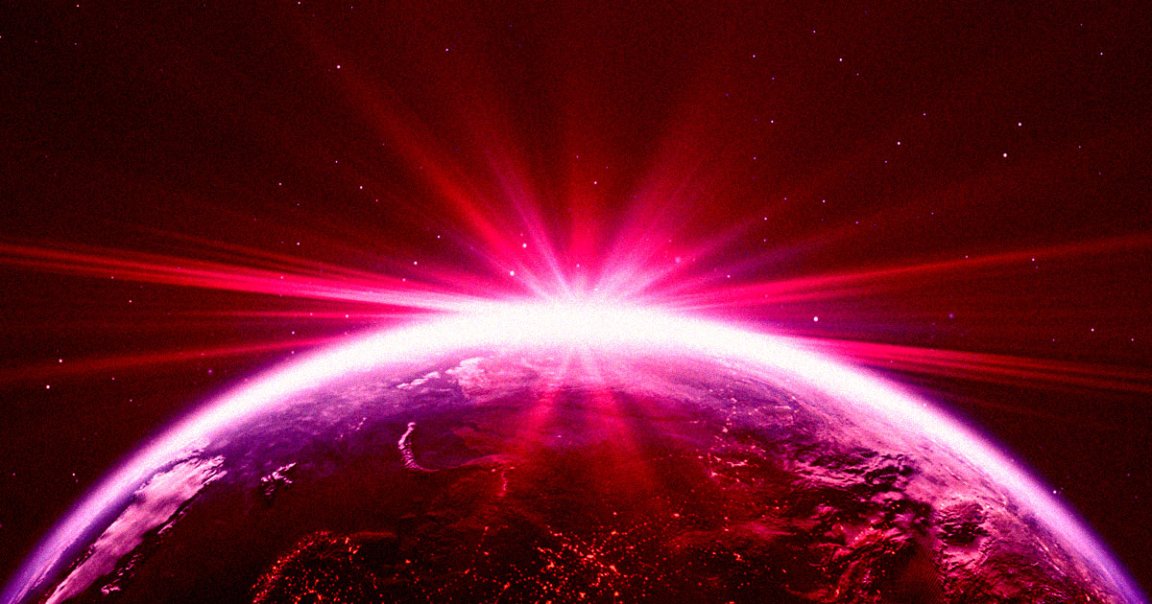
The BOAT
It sounds as though in October 2022, humanity may have gotten a little taste of a cosmic disaster of epic proportions.
A powerful supernova some 1.9 billion light-years away rocked the universe, sending out a massive burst of gamma rays that buffeted our humble planet.
At the time, astronomers dubbed the flareup the “BOAT,” which stands for “brightest of all time” in a clear reference to iconic rap terminology. It was an exceedingly rare event, with scientists estimating such an event only occurs once in every 10,000 years.
Now, scientists have combed through the data and found that the gamma ray burst (GRB) was so powerful that it took a chunk out of the Earth’s upper atmosphere, the New York Times reports.
“The ozone was partially depleted — was destroyed temporarily,” Pietro Ubertini, an astronomer at the National Institute of Astrophysics in Rome, coauthor of a new paper published in the journal Nature, told the newspaper.
Fortunately, the ozone layer, a layer of the Earth’s stratosphere that shields it from harmful ultraviolet radiation, repaired itself in a matter of minutes, meaning that it was “nothing serious,” per Ubertini.
But if the supernova that triggered the burst had been any closer, he said, “it would be a catastrophe.”
GRB Bush
GRBs are the most powerful types of explosions in the known universe, intense enough to have considerable effects even over vast interstellar distances.
Using simulations, scientists have previously concluded that a GRB in our own galaxy could fully wipe out our planet’s ozone layer for years, triggering a devastating extinction event.
The latest research marks the first time scientists have found evidence that distant supernovas can wipe out electrons in the ionosphere, a part of the Earth’s upper atmosphere ranging roughly 50 to 400 miles above the surface, removing the remaining nitrogen molecules’ ability to absorb potentially harmful UV radiation from the Sun.
Fortunately, the chances of a catastrophic cosmic explosion that could wipe out the ozone layer for prolonged periods of time remain slim.
After all, the GRB that rocked the world last year was likely the brightest to occur “since human civilization began,” as Eric Burns, an assistant professor of physics and astronomy at Louisiana State University, explained in a March press release.
But being better informed about rare cosmic threats is clearly prudent — just look at the broad public support for preventative measures against a killer asteroid.
More on gamma ray bursts: Neutron Star Collision Unleashes Explosion One Million Times Brighter Than Our Galaxy